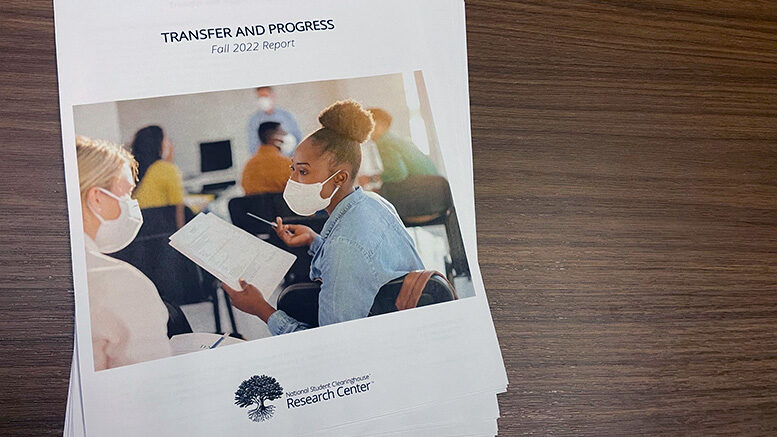The rate of community college students transferring to four-year colleges this fall continued its pandemic-era decline, dropping -7.5% compared to fall 2021, according to a new report. In particular, students who earned an associate degree before transferring declined more than those without a prior associate degree — -12.7% (21,700 students) and -4.9% (16,000 students), respectively.
Two-year college advocates note the continued decline may partly reflect that many community college students just this fall started to return to college following draconian declines during the Covid pandemic. Also, the decrease may be a combined result of individuals changing careers and required education, opting instead to work or simply being more adverse to accruing debt as worries about inflation simmer.
What is eye-catching in the National Student Clearinghouse Research Center report is that community college students who previously transferred to four-year institutions are attaining their baccalaureates at a higher rate. Baccalaureate attainment rates improved for the fall 2016 community college entering cohort even during their pandemic-impacted 5th and 6th years of enrollment, the report says.
The overall six-year baccalaureate completion rate for cohorts starting at a community college in 2016 is 34.9%, compared to 34.5% for the 2015 cohort and 32.8% for the 2014 cohort.
“Unlike the stabilization that we saw in the general enrollment numbers last month, the number of students who transferred in fall 2022 is continuing the downward slide it has been on since the pandemic began in 2020, and this is especially true for upward transfers,” Doug Shapiro, executive director of the National Student Clearinghouse Research Center, said in a release. “It is very encouraging, however, that among those who transferred from community colleges into four-year schools six years ago, students are now completing bachelor’s degrees at higher rates than before, despite the disruptions of the pandemic.”
And while so-called upward transfers — from a two- to a four-year college — declined, lateral transfers and reverse transfers — where students move to another community college, or go from a four- to two-year college — rose in the fall compared to fall 2021. Enrollment for returning community college students in particular saw increases: a 3.3% jump for lateral transfers and 3.2% bump for reverse transfers.
In fall 2022, transfer-in rates for four-year institutions decreased across all races, except for Black students in private nonprofit four-year institutions. Transfer-in rates for community colleges increased for all races, especially for Black, Latinx and Asian students. The transfer-in rate represents the number of students who transferred into an institution in a given term as a percent of all undergraduates enrolled in that term. This differs from the annual rate of change in transfer enrollment.
The report, which is part of an ongoing series on transfers, also breaks down figures based on gender, race/ethnicity and age. In addition, it includes for the first time estimates of students’ income in order to provide insights on transfer trends based on socioeconomic circumstances before and after the pandemic.

